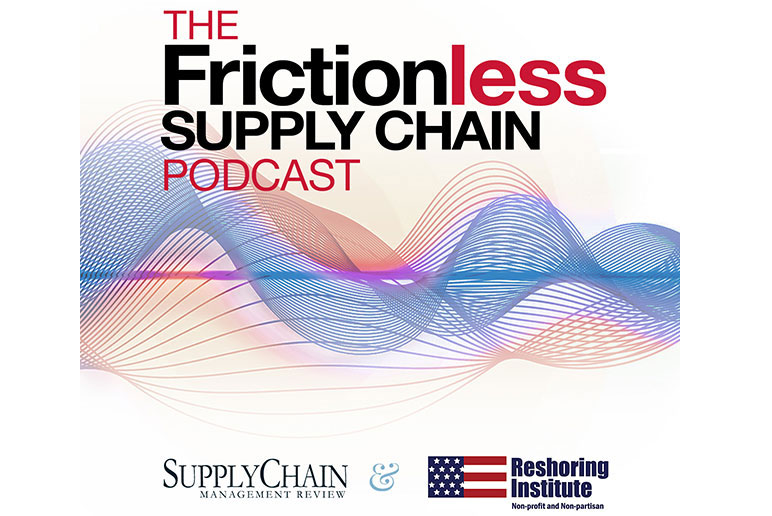February services economy activity remained on the right side of growth, although it declined compared to January, according to the February edition of the Services ISM Report on Business, which was issued today by the Institute for Supply Management (ISM).
The reading for the report’s key indicator—the Services PMI (formerly the Non-Manufacturing PMI)—at 55.1(a reading of 50 or higher signals growth)—fell 3.4% compared to January’s 59.9, marking the third consecutive month of sequential Service PMI declines. The Services PMI grew for the 21st consecutive month, with services sector growth intact for 143 of the last 145 months through January.
The February Services PMI is 6.1% below the 12-month average of 62.6, with November 2021’s 68.4 and February 2022’s 56.5 representing the high and low points over the last 12 months, respectively.
ISM reported that 14 of the services sectors it tracks saw gains in February, including: Construction; Transportation & Warehousing; Educational Services; Management of Companies & Support Services; Wholesale Trade; Mining; Utilities; Health Care & Social Assistance; Finance & Insurance; Professional, Scientific & Technical Services; Public Administration; Retail Trade; Information; and Other Services. And the four sectors with declines were: Real Estate, Rental & Leasing; Arts, Entertainment & Recreation; Agriculture, Forestry, Fishing & Hunting; and Accommodation & Food Services.
The report’s equally weighted subindexes that directly factor into the NMI saw across-the-board declines in February, including:
- Business activity/production, at 55.1, fell 4.8%, growing, at a slower rate, for the 21st consecutive month, with 13 services sectors reporting growth;
- New orders, at 56.1, fell 5.6%, growing, at a slower rate, for the 21st consecutive month, with 11 services sectors reporting growth;
- Employment, at 48.5, fell 3.8%, contracting after seven straight months of growth, with seven services sectors growing in February; and
- Supplier deliveries—at 66.2 (a reading above 50 percent indicates slower deliveries)—were up 0.5% compared to January, slowing, at a faster rate, for the 33rd consecutive month
Comments from ISM member panelists included in the report highlighted various issues being seen in the services sector, including: labor, the pandemic, and business levels, among others.
“Raw material increases, labor shortages, wage increases and transportation issues are still the primary issues affecting our operations and pricing,” said an Accommodation & Food Services respondent.
An Agriculture, Forestry, Fishing & Hunting respondent observed that supply chain challenges continue to result in lower inventories of products and higher costs, with the challenges are at the highest point since COVID-19 began.
Tony Nieves, Chair of ISM’s Management Services Business Survey Committee, said in an interview that while the Services PMI declined, it is coming off of a stretch of very high readings, coupled with some variables impacting the index as well.
“It has a fair amount to do with supply and demand, in that both are having an impact,” he said. “Even though supply chain pressures and tension have eased somewhat, supply is still not meeting the demand, and the demand has increased.” he said. “Even though we don’t see it in the New Orders index, part of this has to correlate back to capacity constraints that are still experiencing an abundance of moderation. That was reflected in the backlog of orders [up 6.8% in February to 64.2 and growing for the 14th consecutive month] and also in the slowing of deliveries.”
Nieves made it clear that even though the Services PMI has seen declines in recent months, the readings remain strong, while also noting the index is measuring change on a sequential, or month-over-month, basis.
“Things were better in February, but they were not growing as fast,” he said.
Addressing the nearly 4% dip in the February Employment reading, Nieves said that reflects how workers continue to be in the driver’s seat, with the metric’s reading being in alignment with the current state of the labor pool.
“Workers are looking at options that are very favorable to them, whether it is partial work from home or remote work, and less hours and more pay,” he said. “People in tedious jobs like hospitality or retail are looking to move on to other areas, because there is such a need for workers that they can move into better paying and less strenuous type of work. It is a real challenge. The employment has not been positive because people do not want to hire. It has more to do with the variables and impediments that are out there.”
When asked about the impact of the Russia-Ukraine conflict on the services economy, Nieves said that any challenges pale compared to the manufacturing sector, which he said is on the forefront of what is happening.
“The resources coming through Russia and Ukraine are barrels of oil, things needed for chip manufacturing like steel, natural gas, and other things,” he said. “Things like that will come through the supply chain and eventually hit us for things like fuel prices, which we are already seeing, as well as any petroleum-based products, as well as steel, chips, and it will also affect the production of cars. It really is more of a trickle-down to services after hitting manufacturing first.”
On a year-to-date basis, Nieves described the current state of the services economy as better than anticipated.
“Things are much better than what we thought they would be, especially when going back to the last ISM Semiannual Forecast,” he said. “We have hit some record highs in the composite index, and we have had some pullback. But we needed to see some cooling off, because it is better than overheating.”
SC
MR


Latest Supply Chain News
Latest Resources

 Explore
Explore
Topics
Latest Supply Chain News
- Geopolitical readiness in supply chains: Strategic challenges for leaders
- Unlocking retention: The role employee engagement plays
- Can supply chain managers embrace an entrepreneurial mindset?
- Challenges to ESG reporting
- With capacity to spare, logistics real estate demand remains subdued
- Tariffs, taxes and trade: The impact of Trump’s reelection on the supply chain
- More latest news
Latest Resources

Subscribe

Supply Chain Management Review delivers the best industry content.

Editors’ Picks




